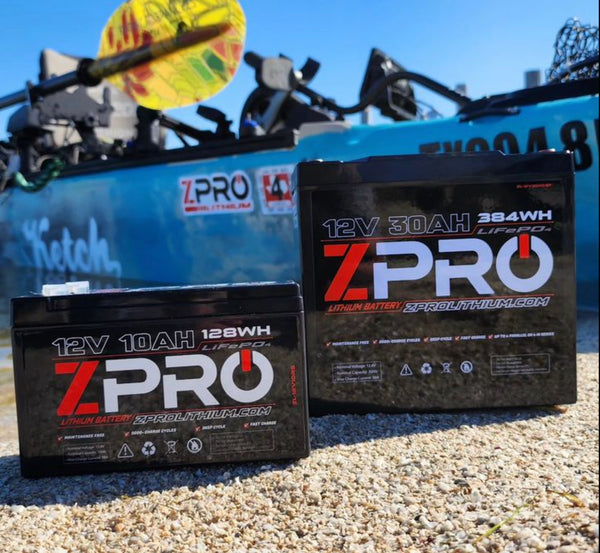In the realm of boating and fishing, the advent of electric trolling motors has revolutionized the way enthusiasts navigate the waters. The heart of these systems lies in their batteries, with lithium and lead-acid batteries being the two predominant types. Each comes with its own set of maintenance needs, performance characteristics, and longevity, making it vital for users to understand the nuances of maintaining these batteries to maximize their investment. In this comprehensive comparison, we delve into how to maintain both lithium and lead-acid batteries for trolling motors, ensuring that anglers and boaters can make informed decisions and maintain their equipment effectively.
1. Understanding the Basics
Before diving into maintenance practices, it's essential to understand the fundamental differences between lithium and lead-acid batteries. Lead-acid batteries, including AGM (Absorbent Glass Mat) and flooded types, have been the traditional choice for decades. They are known for their reliability and lower upfront cost. In contrast, lithium batteries (specifically Lithium Iron Phosphate - LiFePO4) are a newer technology offering higher energy density, lighter weight, and longer life cycles but at a higher initial cost.
2. Charging Practices
2.1 Lithium Batteries
Lithium batteries benefit from a more straightforward charging process, as they don't require the absorption phase that lead-acid batteries do. This means they can be charged faster and are more efficient in converting electrical energy from the charger into stored chemical energy. To maintain a lithium battery, use a charger specifically designed for LiFePO4 batteries to ensure the correct charging algorithm and voltage levels. It's generally safe to charge a lithium battery after each use, regardless of its discharge level, without worrying about memory effects or significant degradation.
2.2 Lead-Acid Batteries
Charging a lead-acid battery requires a bit more attention to detail. It's crucial to use a three-stage charger (bulk, absorption, float) that matches the battery type (AGM, Gel, or Flooded). Overcharging can lead to water loss and damage in flooded batteries or can cause overheating in AGM and Gel types. Lead-acid batteries should be recharged as soon as possible after use to avoid sulfation, which can occur if the battery is left in a discharged state for too long.
3. Storage and Handling
3.1 Lithium Batteries
One of the lithium batteries' advantages is their low self-discharge rate, making them ideal for long-term storage. However, it's recommended to store them at a 50-60% charge level if not used for an extended period. Extreme temperatures should be avoided, but lithium batteries are generally more tolerant of cold and heat compared to lead-acid batteries. Physically, lithium batteries are more robust and less susceptible to damage from vibration or impact, which is an added bonus on the water.
3.2 Lead-Acid Batteries
For lead-acid batteries, the key to successful long-term storage is ensuring they are fully charged and maintained with a trickle charger or a periodic top-up charge. Storage in a cool, dry place is essential, as extreme cold can freeze the electrolyte in flooded batteries, and high temperatures can accelerate self-discharge and plate corrosion. Regular checks for water levels (in flooded types) and terminal corrosion are also necessary.
4. Daily and Seasonal Maintenance
4.1 Lithium Batteries
Daily maintenance for lithium batteries is minimal. Ensuring the terminals are clean and connections are tight is usually all that's needed. Seasonally, a visual inspection for any physical damage and a check-up with a multimeter to ensure the battery is holding charge correctly can help catch any issues early.
4.2 Lead-Acid Batteries
Lead-acid batteries require more frequent attention. Water levels in flooded batteries need to be checked and topped up with distilled water regularly. Terminals should be cleaned to prevent corrosion, and connections must be tight to avoid resistance build-up. Seasonal maintenance includes checking the state of charge, ensuring the battery casing is free from cracks, and storing the battery properly off-season with a maintenance charger.
5. Life Expectancy and Cost Considerations
While lithium batteries have a higher upfront cost, their longer lifespan (up to 10 years or more) and the ability to deliver more consistent power output throughout their life make them a cost-effective choice in the long run. Lead-acid batteries, although cheaper initially, typically need replacement every 3 to 5 years, depending on usage and maintenance.
6. Safety and Environmental Considerations
Both battery types require safe handling practices to avoid accidents and ensure environmental protection. Lithium batteries, however, have a higher energy density and, if damaged or improperly handled, can pose a risk of thermal runaway. It's essential to follow the manufacturer's guidelines for charging, storage, and disposal. Lead-acid batteries contain toxic substances like sulfuric acid and lead, necessitating careful disposal and recycling to prevent environmental contamination.

Choosing Trolling Moter Batteries On Maintenance Cost
Choosing between lithium batteries and lead-acid batteries for your trolling motor comes down to balancing initial cost, maintenance requirements, performance, and longevity. Regardless of the type, proper care and maintenance can significantly extend the life of your battery, ensuring reliable performance and safety on the water. By understanding the specific needs of each battery type, boaters and anglers can ensure their trolling motors are always ready for the next adventure, making the most of their time and investment in the great outdoors.

